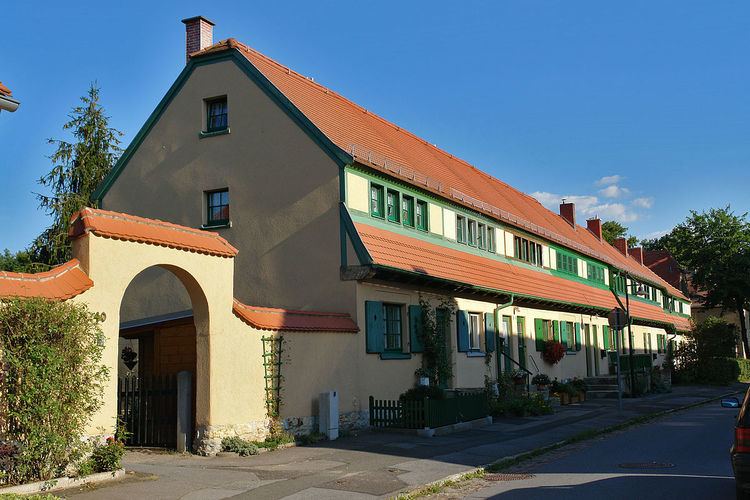District Urban district Time zone CET/CEST (UTC+1/+2) Area 10.69 km² Borough Klotzsche | Vehicle registration DD Local time Thursday 9:00 AM | |
 | ||
Weather 6°C, Wind W at 13 km/h, 93% Humidity | ||
Dresden no 8 tram ride from infineon s d to hellerau saxony germany 26th february 2014
Hellerau is a northern quarter (Stadtteil) in the City of Dresden, Germany, slightly south of Dresden Airport. It was the first garden city in Germany. The northern section of Hellerau absorbed the village of Klotzsche, where some 18th century buildings remain.
Contents
- Dresden no 8 tram ride from infineon s d to hellerau saxony germany 26th february 2014
- Map of Hellerau Dresden Germany
- Origins
- Pattern
- Festspielhaus
- Notable residents
- References
Map of Hellerau, Dresden, Germany
Origins
Based on the ideas of Ebenezer Howard, businessman Karl Schmidt-Hellerau founded Hellerau near Dresden in 1909. The idea was to create an organic, planned community. Several well-known architects participated in its construction, including Richard Riemerschmid, Heinrich Tessenow, Hermann Muthesius, Kurt Frick, Georg Metzendorf, Wilhelm Kreis and Bruno Paul.
Hellerau attracted cultural visionaries from all over Europe. Among them were Émile Jaques-Dalcroze, composer, and Mary Wigman, choreographer. Until the start of World War I annual festivals attracted further members of the progressive elite of the time. In 1921 educator A. S. Neill founded his Summerhill School here. With the establishment of the National Socialist (Nazi) government in Germany in 1933, the progressive community at Hellerau ended.
Pattern
The development lies on gently sloping ground and is laid out as a series of curvelinear streets, of an overall organic type form. Materials are typically cream rendered walls on a stone base, with red tile roofs and green windows (mainly with shutters). The landscape is dominated by tall conifers.
The Deutsche Werkstatten, a large factory involved in the production of craft furniture, played a central role in the function of the community, but geographically lies on its southern edge. Functionally this has been superseded by a modern facility further to the south.
The layout physically centres upon a small rectangular market square.
Buildings are generally from one storey and attic to three storey, but all adopt a gentle cottage style. The exception to this is the large former water tower, now converted to housing use.
Festspielhaus
To the north-west the Festspielhaus provides a cultural focus. This housed a Rhythmic Gymnastics centre during the Second World War. The central building here still holds some remnants of its communist past, when it served as a Russian barracks from 1945 until 1989. The building has been restored and is now a base for a dance company.
Surrounding buildings are partly restored, with sections also hoped to create a base for resident artists. The community park surrounding the complex, Golgi Park, creates a multi-functional space serving the local community.
